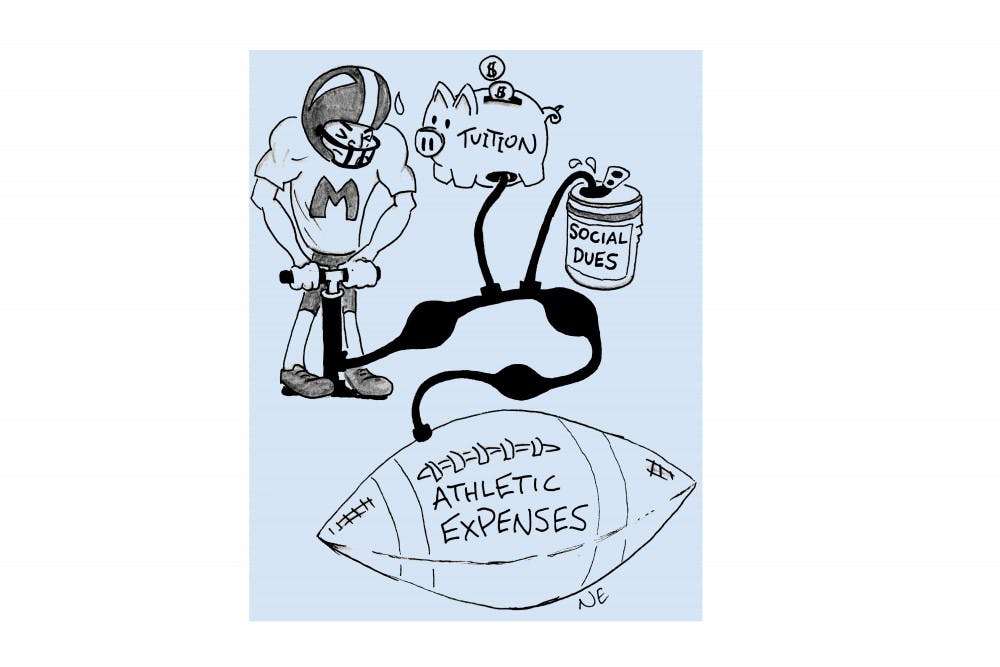It’s Actually Just a Game,” an op-ed by Issac Baker ’14.5 and Hannah Bristol ’14.5 in our Jan. 22 issue, sparked outrage and debate from both athletes and non-athletes alike. But it also raised some important questions on the financial support athletic teams receive compared to other extra-curricular activities. Though the original opinion article was criticized for leaning too heavily on the stereotype of rich and privileged jocks without any input from athletes themselves, we decided to collect some data. How much does it really cost to be a Middlebury athlete?
We surveyed at least three athletes from all teams* featured here on the hours they devote to their sport per week in-season and their yearly expenses on travel, clothing, social dues, and equipment. While travel costs were mostly paid for by the athletic department, there are other expenses to being an athlete that come out-of-pocket. What is on the spread is the calculated average out-of-pocket expenses from over 36 survey responses and their breakdowns by sport.
What surprised us was how the cost of being an athlete off-the-field in social dues rivaled on-the-field costs of equipment. Although some teams had minimal social costs, like the football team, most athletes spent well over $100 per year in social dues.
Although most teams agreed that the school provided adequate financial support for Division III programs, the out-of-pocket costs for social activities and optional clothing were significant. The cost of equipment to play the sport stacks against the cost of being a part of college athlete culture with the parties, social bonding and apparel. As a result, there are two distinct financial obstacles — (1) equipment expenses and (2) social expenses — to being an athlete.
“Middlebury covers the majority of my sport’s expenses, except maybe for the more social aspects of the sport which could be prohibitive. It is not so much that the sport itself is prohibitive but more the culture of the sport,” Caroline Guiot ’16 said, a member of the women’s Cross Country team. “[The culture of] who has the cutest running outfit, Lululemon, et cetera,” she elaborated.
In addition to social costs, the mandatory spring break training trips were often cited as being too high (up to $800), despite partial subsidies from team fundraisers. Many teams cited t-shirt sales and phone-a-thons as their primary source of fundraising, though some teams used other unique ways to raise money. For example, the Men’s Track & Field team runs grille delivery and the Bi-Hall coffee kiosk in the evenings. Last year, they raised around $25,000. The Women’s Waterpolo team teaches their sport in a J-term workshop. The Softball team runs the concession stand during ice hockey games, while the Women’s Lacrosse team hosts a skills clinic for prospective student-athletes.
Whether you agree or deny that athletic privilege exists on campus, there is a lot of money that goes into the athletic institution and lifestyle, and the numbers are real.
*except Women’s Track and Women’s Water Polo, which only had one athlete survey respondent




